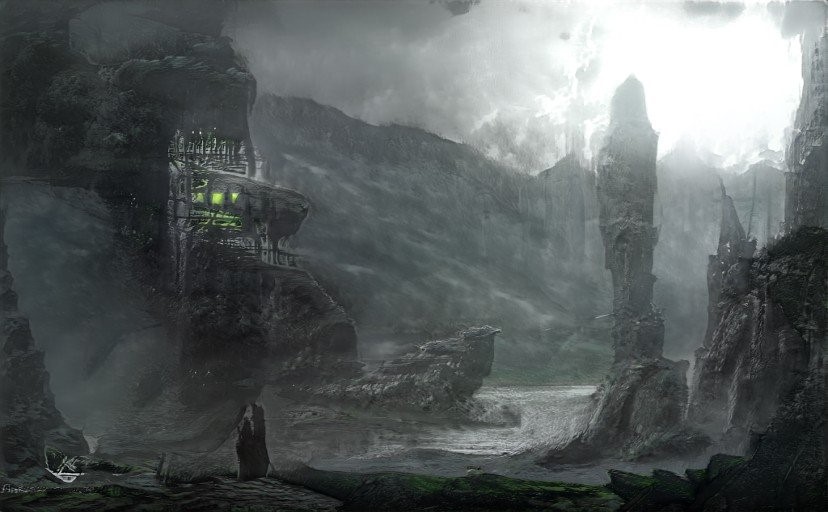Tethra
'If they didn't want to be used as pillows, then why are they so damn soft?'Also known as Tickerbeasts, or simply Tickers, Tethra are a common working animal resembling massive wild boars, with stout, blocky builds and short, powerful legs. They have shovel-shaped hooves that aid in digging, and arched backs that form a large hump- making them difficult to ride, but good for carrying luggage or pulling wagons. Their pelts are extremely thick, with soft, colorful fur. Breeding Tethra to produce vivid and uniquely patterned specimens is a common hobby, especially among old, retired farmers wanting some company.
Diet-
Tethra are herbivores, and eat primarily low-hanging leaves and shrubbery. They have an excellent sense of smell that they use to find berry bushes and roots, and they are one of the only large animals that can safely eat thorny plants. In captivity, Synthien Finchfeed is the staple of their diet, consisting of various nuts and berries as well as native Synthien plants.Utility-
Tethra were originally bred for their hide and meat, but this trade proved to be very inefficient due to their long lifecycles. While farms like this do still exist, they serve only the elite and wealthy, and are quite uncommon. Currently, Tethra are most often used as pack mules for long trips, pulling wagons and carrying luggage on their backs, and they are prized for their strength, size, and endurance. While they don't deal with heat well due to their thick fur, Tethra are capable of surviving in very low temperatures, and can be trained to act as windbreaks by sleeping in a loose ring around their owners tents. Those travelling in harsh, freezing climates are advised to keep one near at all times, as they provide great warmth and enjoy cuddles.Behavior-
Tethra are extremely playful and friendly, to the point where part of the reason meat trade is so sparse is because farmers get attached to them too easily. They are curious and very gentle around small creatures and children, and they make very affectionate pets, though their size can cause problems in urban areas. This friendliness is largely due to their lack of terrestrial predators.Variants-
Wild Tethra have larger humps and bigger tusks than domestic Tethra, as well as courser, more bristly fur. Their ears are rounded and even smaller than domestic Tethra, and they have duller fur and less defined patterns. They are a bit less friendly than domesticated Tethra, but hold little fear for Nevians and will usually just leave people alone. Very rarely, a Tethra might be born completely monochrome. These Tethra don't often live long or happy lives, as they are ostracized from their peers and find it very difficult to attract mates. Though breeding monochrome Tethra is seen by most as very cruel, they sell at outrageous prices to those who want more intimidating or prestigious animals to carry their cargo. Tethra have several different coat patterns, but their underbellies will always be a lighter colour than their backs, and they will usually have pale spots on their backs.Breeding-
When a Tethra is ready to find a mate, they moult and shed their fur, revealing a more vivid coat underneath. As Tethra adore bright colours, this makes them far more likely to attract a mate, and brilliantly coloured specimens are prized among farmers as a point of pride.Products-
Tethra meat and hide is extremely expensive, and eating or wearing these products is seen as a huge status symbol among the rich. Their meat is gamey and quite tough, served at grand feasts, and their hide is very thick, useful for protective clothing, cloaks, or rugs.Name Origin-
Their tusks and the bones in their ankles click when they walk, making an audible 'tick' noise that earns them the nickname of Tickerbeasts. Large caravans of Tethra are can be quite loud, and are known for their unique sound, usually heralding merchants or messengers.Myth and Legend-
Tethra feature in quite a few folktales, characterized as wise, gentle, and patient. Perhaps the most well known of these tales is The Tethra and the Kaer, a story told frequently to impulsive children. They are also often depicted as old and mentor-like, sometimes assuming parental roles to the young, brave protagonist.Skeletal Structure-
An interesting fact about Tethra is that almost all of their mass is comprised of thick fur and fat. Their actual skeletons suggest a much smaller creature, with a more coiled, almost draconic build, but this framework is almost impossible to see under everything else.Remove these ads. Join the Worldbuilders Guild











Comments